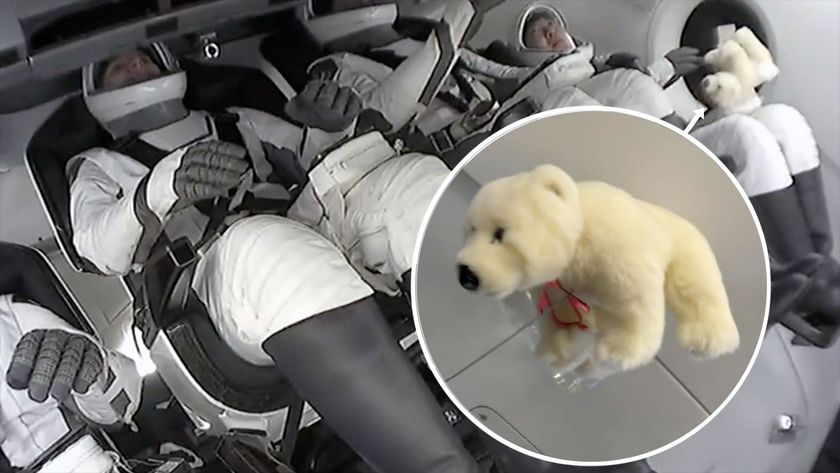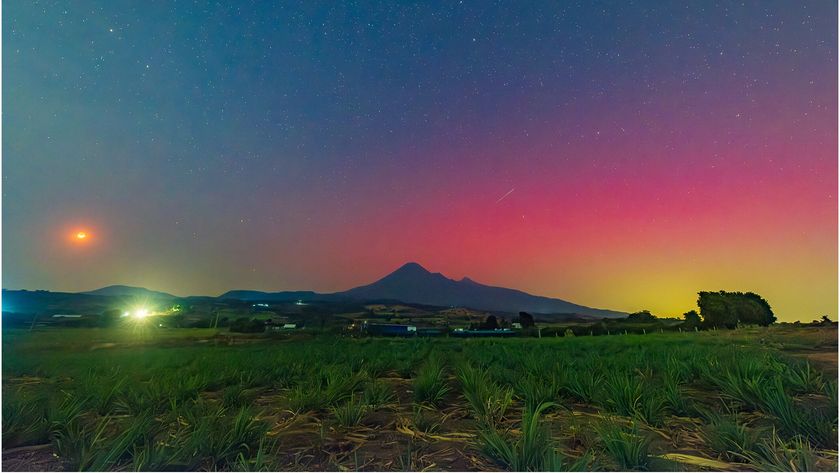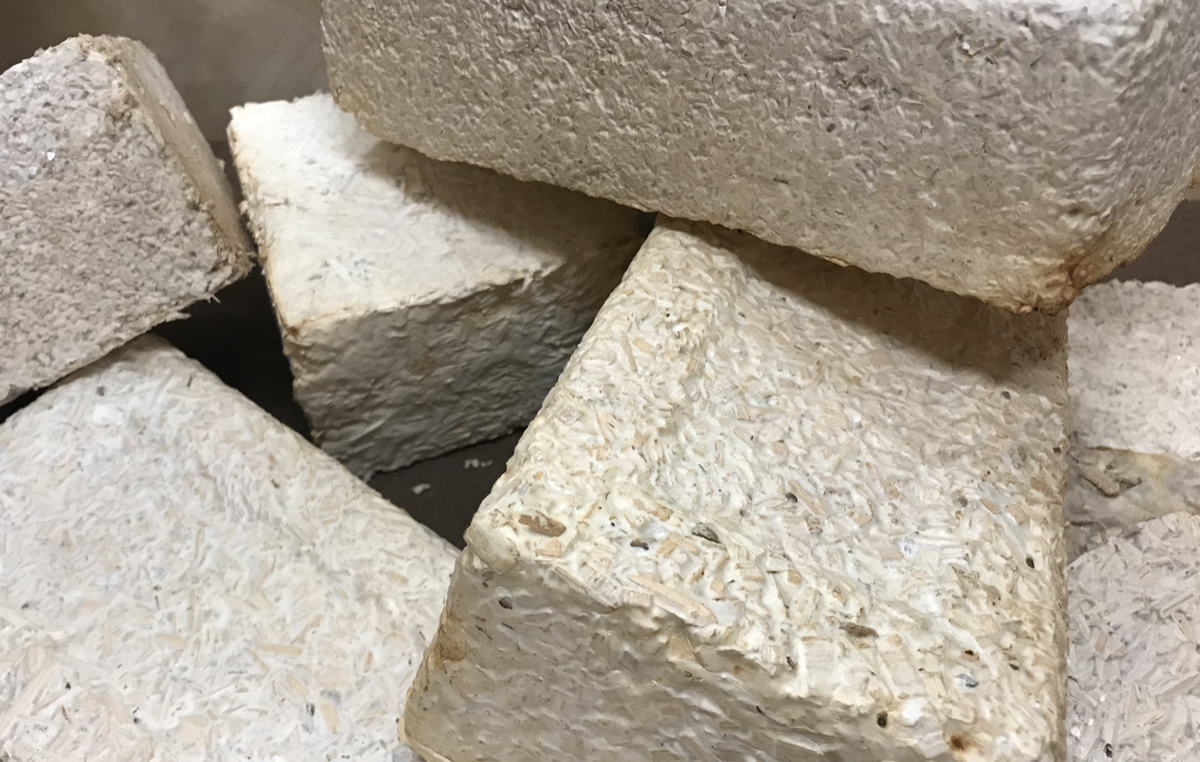
Fungus could be very much among us when humanity sets up shop on the moon and beyond.
NASA researchers are investigating the potential of mycelia — the mass of nutrient-absorbing, widely branching underground threads that make up much of a fungus's bulk — to help construct outposts on the moon and Mars.
"Right now, traditional habitat designs for Mars are like a turtle — carrying our homes with us on our backs," project principal investigator Lynn Rothschild, of NASA's Ames Research Center in California, said in a statement.
This is "a reliable plan, but with huge energy costs," she added in a NASA statement. "Instead, we can harness mycelia to grow these habitats ourselves when we get there."
Video: How fungus among us could build moon bases
Related: How Living on Mars Could Challenge Colonists (Infographic)
Rothschild and her team are conducting their research with the aid of funding from the NASA Innovative Advanced Concepts (NIAC) program, which seeks to encourage the development of potentially game-changing exploration technologies.
And the myco-architecture project could indeed be game-changing, if everything works out. (There's certainly no guarantee that it will, however; the project is in the early stages.)
Get the Space.com Newsletter
Breaking space news, the latest updates on rocket launches, skywatching events and more!
"Ultimately, the project envisions a future where human explorers can bring a compact habitat built out of a lightweight material with dormant fungi that will last on long journeys to places like Mars," NASA officials wrote in the same statement. "Upon arrival, by unfolding that basic structure and simply adding water, the fungi will be able to grow around that framework into a fully functional human habitat — all while being safely contained within the habitat to avoid contaminating the Martian environment."
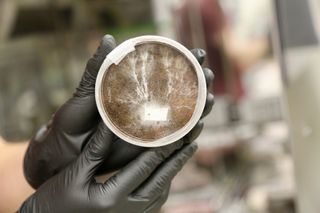
There could be many different manifestations of off-Earth "mush-rooms." For example, one habitat concept would consist of three layers, NASA officials explained. On top would be water ice, which may be sourced locally. (Both the moon and Mars are known to harbor the stuff.) The ice would shield the habitat's human occupants from harmful radiation and would also provide resources to the tiny denizens of the middle layer — photosynthesizing microbes called cyanobacteria. These creatures would produce oxygen for the astronauts and nutrients for the fungal mycelia, the chief constituent of the bottom layer.
That basal layer provides the main structure of the habitat. The mycelia that make it up would be heavily processed, baked into sturdy bricks. This would kill the fungus, ensuring that none could escape and proliferate in the alien wilds. But as a second safeguard, any fungi used in this manner would be genetically altered to make them incapable of surviving beyond the base, NASA officials said.
The mycelia could do more than just serve as walls and ceilings, however. Fungi could also help filter water for off-Earth pioneers and extract minerals from their sewage, NASA officials said. And, like many technologies developed for space exploration, myco-architecture could end up having significant applications here on Earth as well — perhaps helping to reduce the huge carbon footprint of the construction industry, for example.
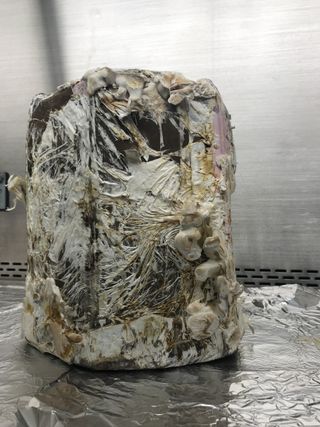
"When we design for space, we're free to experiment with new ideas and materials with much more freedom than we would on Earth," Rothschild said. "And after these prototypes are designed for other worlds, we can bring them back to ours."
Rothschild and her colleagues aren't the only researchers working on novel and efficient habitat designs. For example, teams around the world are investigating the potential of 3D printing to construct habitats out of native Mars or moon material, spurred in part by competitions such as NASA's 3D-Printed Habitat Challenge.
- Moon Base Visions: How to Build a Lunar Colony (Photos)
- The First Mars Colony Could Be 3D Printed from Red Planet Dust
- Home On the Moon: How to Build a Lunar Colony (Infographic)
Mike Wall's book about the search for alien life, "Out There" (Grand Central Publishing, 2018; illustrated by Karl Tate), is out now. Follow him on Twitter @michaeldwall. Follow us on Twitter @Spacedotcom or Facebook.

Join our Space Forums to keep talking space on the latest missions, night sky and more! And if you have a news tip, correction or comment, let us know at: community@space.com.

Michael Wall is a Senior Space Writer with Space.com and joined the team in 2010. He primarily covers exoplanets, spaceflight and military space, but has been known to dabble in the space art beat. His book about the search for alien life, "Out There," was published on Nov. 13, 2018. Before becoming a science writer, Michael worked as a herpetologist and wildlife biologist. He has a Ph.D. in evolutionary biology from the University of Sydney, Australia, a bachelor's degree from the University of Arizona, and a graduate certificate in science writing from the University of California, Santa Cruz. To find out what his latest project is, you can follow Michael on Twitter.


